Building of the Day: 108 St. Edwards Street
Brooklyn, one building at a time. Name: Church of St. Michael and St. Edward Address: 108 St. Edwards Street Cross Streets: Myrtle and Park avenues Neighborhood: Fort Greene Year Built: 1891-1906 Architectural Style: Romanesque Revival Architect: John J. Deery Other buildings by architect: Flats buildings on 7th Avenue, between 1st and 2nd streets, Park Slope. Also…
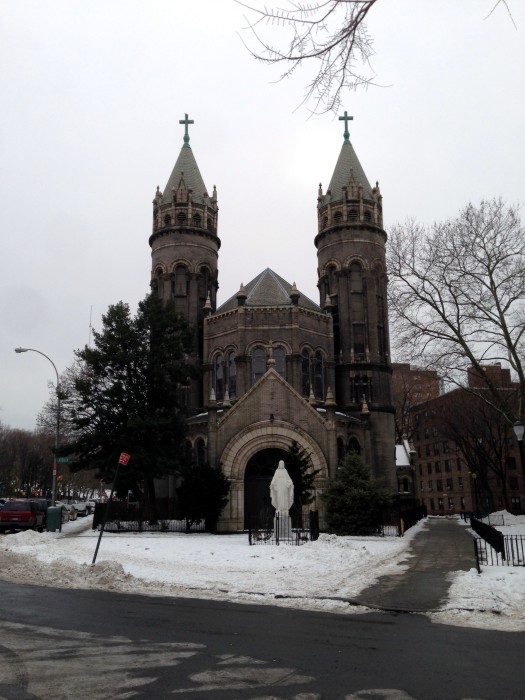

Brooklyn, one building at a time.
Name: Church of St. Michael and St. Edward
Address: 108 St. Edwards Street
Cross Streets: Myrtle and Park avenues
Neighborhood: Fort Greene
Year Built: 1891-1906
Architectural Style: Romanesque Revival
Architect: John J. Deery
Other buildings by architect: Flats buildings on 7th Avenue, between 1st and 2nd streets, Park Slope. Also St. Veronica’s Church, Greenwich Village, and churches and buildings in Philadelphia
Landmarked: No
The story: The growth of the Catholic Church in Brooklyn really speaks to the huge number of Catholics who immigrated to Brooklyn in the second half of the 19th century. The different Catholic ethnic groups; Irish, German, Italian, Polish and others, all might have been Catholic, but they all worshipped in separate churches, self-segregating themselves for many years. For the thousands of immigrants who came here in the 19th century, a house of worship was not only important to one’s spiritual life, but also as a place learn to speak English, and to navigate life in this new land called America. It was also a cultural retreat from living in a new country that often did not welcome newcomers with open and eager arms. Here you could be with your own, and perhaps keep a bit of the Old Country in your life, and in your increasingly American children’s lives.
It’s hard to picture what this part of Brooklyn looked like back in the 19th century, as it has changed so much in the last 100 years. Before the Brooklyn Bridge, the Manhattan Bridge, the BQE and all of the exits and entrances to all three of them, as well as the elevated trains of the turn of the 20th century, this was where the working poor and the very poor lived, in the shadows of the Navy Yard and the factories of Wallabout and Dumbo. By the end of the 19th century, this area had been totally built up with a combination of tenements and houses, factories and warehouses. The Raymond Street Jail, the infamous Brooklyn city jail was only a block away.
No matter where they live, people manage to make a community, and this part of Fort Greene was no different. In addition to the tenements and factories, this was a neighborhood with institutions and entertainments. A map of the neighborhood in 1904 shows two parks, a public school, a Carnegie library, a vaudeville hall, and several churches, in addition to tenement buildings and lots of factories. Those factories employed much of the neighborhood; making shoes, gauges, wagons, and dyeing silk. There were also at least three large furniture factories in the immediate area. In the midst of all this was St. Edward’s.
The church was founded late in the development of the neighborhood, in 1891, as a result of overcrowding in nearby parishes. This was an Irish congregation, in a neighborhood with a large Irish American population. Bishop Laughlin, the first bishop of Brooklyn, was at the end of his career when he appointed one of his assistants, Rev. James F. Mealia, to establish the parish and be its first pastor. St. Edwards would be the 60th Catholic parish in Brooklyn, to that date. That’s more than a parish a year since Bishop Laughlin had been made Bishop in the early 1850s.
Rev. Mealia had some difficulty finding available land in this crowded part of town, but he eventually settled on this lot on what was then at the intersection of Canton and Divisions Streets. Canton was renamed St. Edwards Street, and little one-block Division St. is long gone, after being renamed Leo Place, after Pope Leo III. The parish began raising money for a building, and Rev. Mealia hired architect John J. Deery to design it.
Deery was a Philadelphia born architect who designed mostly churches, but also occasionally other types of buildings. He had an office both in Philadelphia and in Manhattan. Here in Brooklyn, in addition to St. Edwards, he designed the entire block of storefront flats buildings on 7th Avenue, between 1st and 2nd Street, in Park Slope. This block is directly across from PS 321, and includes the infamous run-down flats building on the corner of 2nd St. Across the river in Manhattan, he designed St. Veronica’s R.C. Church in Greenwich Village.
The cornerstone of this magnificent Romanesque Revival Church was laid in 1891. It is shaped like a Greek cross, with two 80 foot towers at the front of the church. The new parish was poor, but that didn’t stop Deery from designing a beautiful church that any Catholic could be proud to worship in. However, because of the many years it took to raise the money to build it, Rev. Mealia insisted that the church be built in layers, with the basement completed first, and a roof put on it so that the space could be functional as a place of worship as construction continued. This was common practice with many churches, and the 14’ ceilings in the space made it less of a cellar, and more of a first floor. The church and its rectory were not totally completed until 1906.
As the 20th century progressed, this part of Fort Greene suffered greatly, economically. It got much worse during the Depression. When World War II broke out, this was the perfect area for new housing for the families of the thousands of factory workers who worked in the defense industries at the Navy Yard, only a block away. The tenements and remaining factories were torn down for the Navy Yard Houses, a 38 acre complex of 35 buildings. Only St. Edwards Church and the Public Library survived, both still in use by old and new residents. The parish of nearby St. Michael’s and this parish were consolidated in 1942, and this church was renamed the parish of St. Michael and St. Edward.
In 1957 and ’58, the Navy Yard Houses were divided into the Ingersoll and Walt Whitman Houses, and made low income housing. The church survived, almost hidden among the buildings in the complex, and was more or less forgotten by everyone else. In 1972, artists Carol Dykeman O’Connor and Robert Zacharian fashioned a new altar and a cross from the recently dismantled El train that ran along Myrtle Avenue, just steps away from the church. As life in the projects was made even worse by the drug wars of the late 20th century, the church lost even more parishioners.
By 2010, the congregation had to leave the main church sanctuary, and once again, like a hundred years before, have services downstairs in the lower chapel. The ceilings upstairs were falling down, raining debris onto the floor. That year, the Dioceses of Brooklyn closed the church for good, and merged it with Sacred Heart Church, on nearby Adelphi Street. Today, this beautiful building is deteriorating and unloved. It’s a real shame that some kind of alternative use can’t be conceived of and implemented. Unless it is repurposed, it will eventually be torn down. To me, that’s a slap in the face to every poor parishioner who gave their dimes and pennies and dollars to build this church. We can do better.
I was contacted by a Brownstoner reader, E.S., who wanted to know more about the church. He sent me links and lots of photographs. All of the pictures in this post, except for the interior shot, are his. Thank you, Mr. S. I’m afraid I didn’t tell you much more than you knew already, but I hope you enjoy the report. GMAP
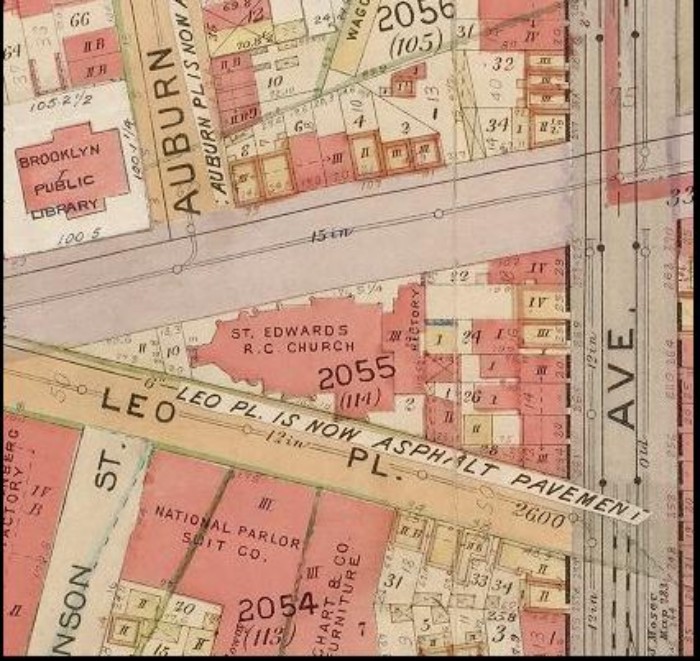
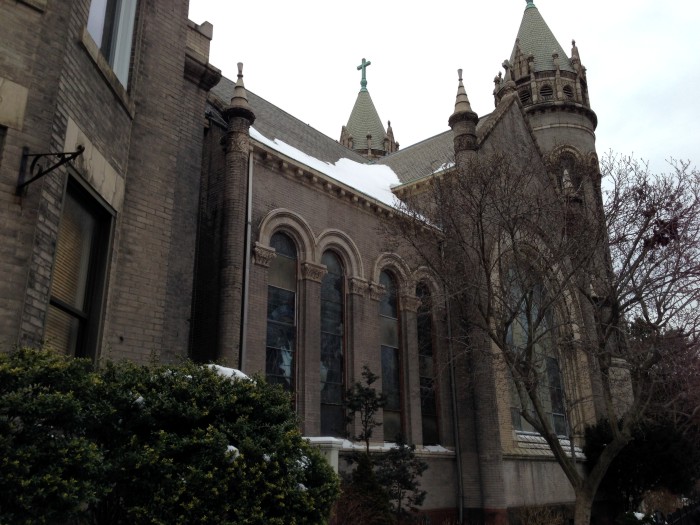

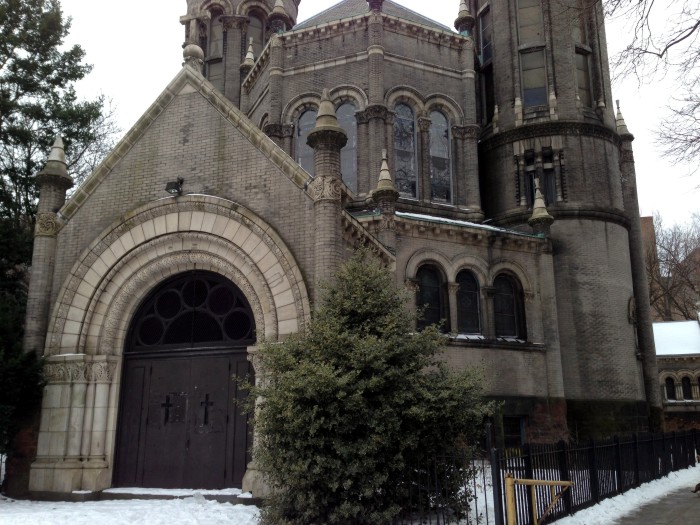
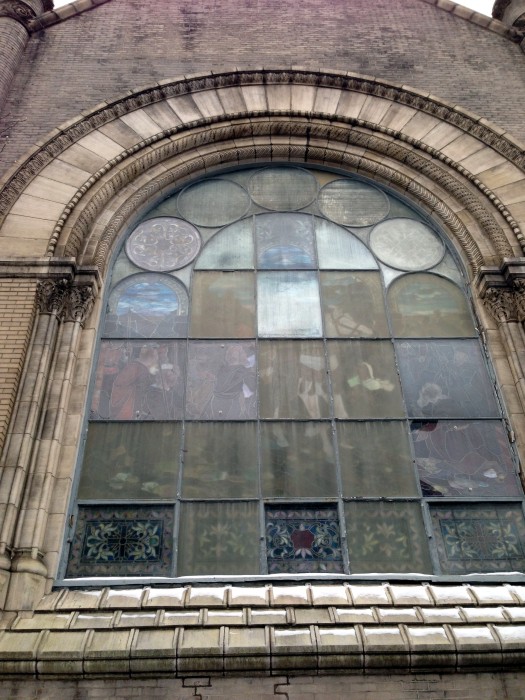
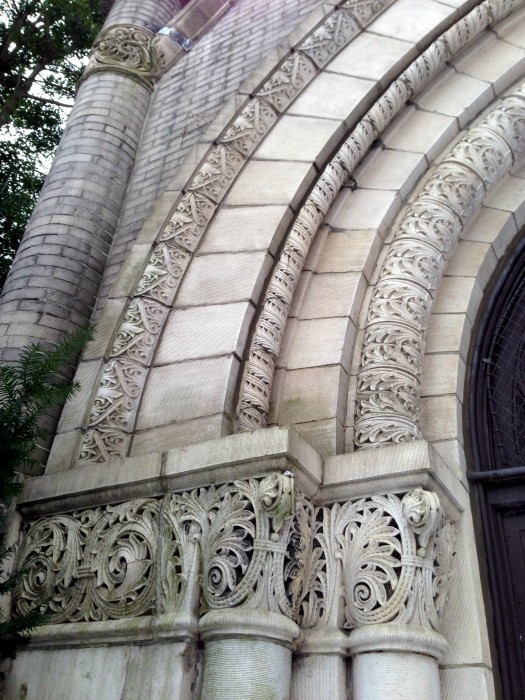
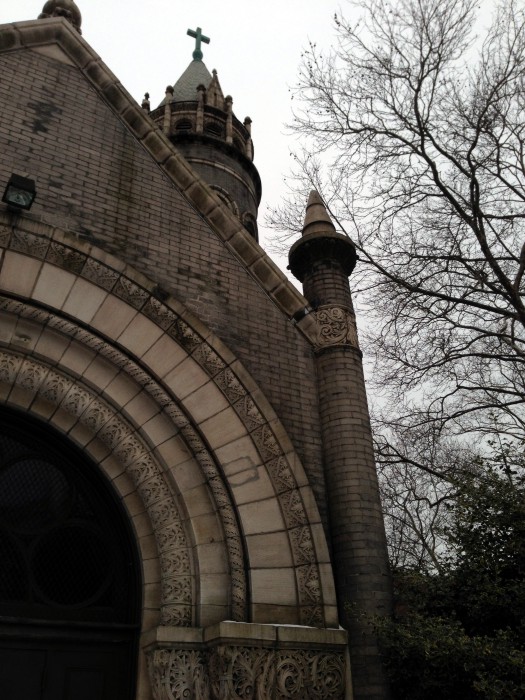
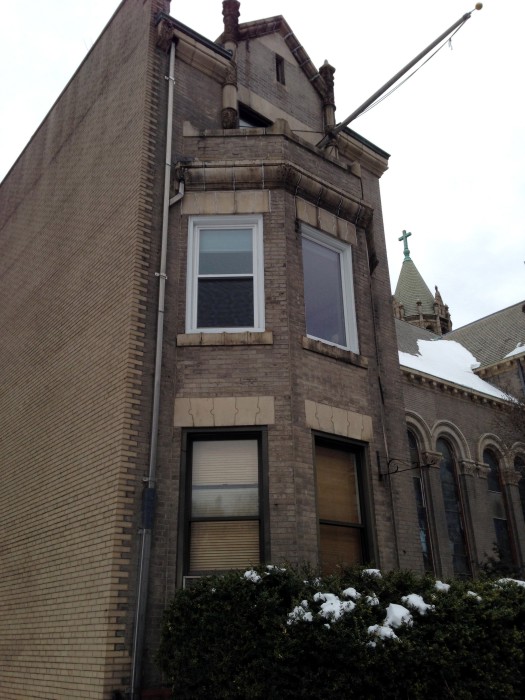
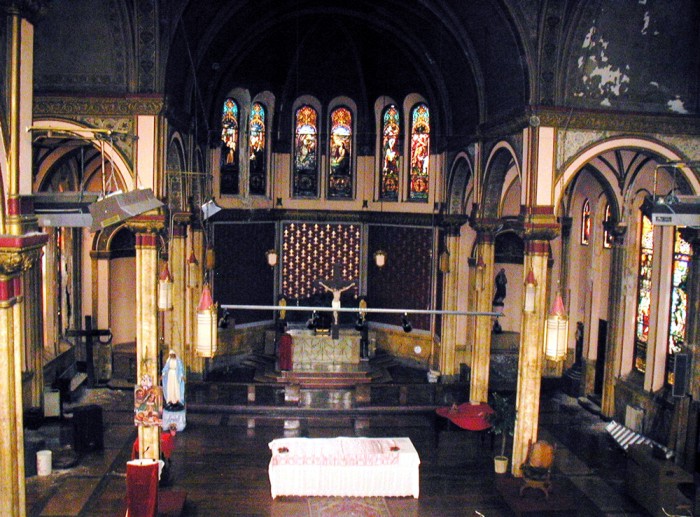




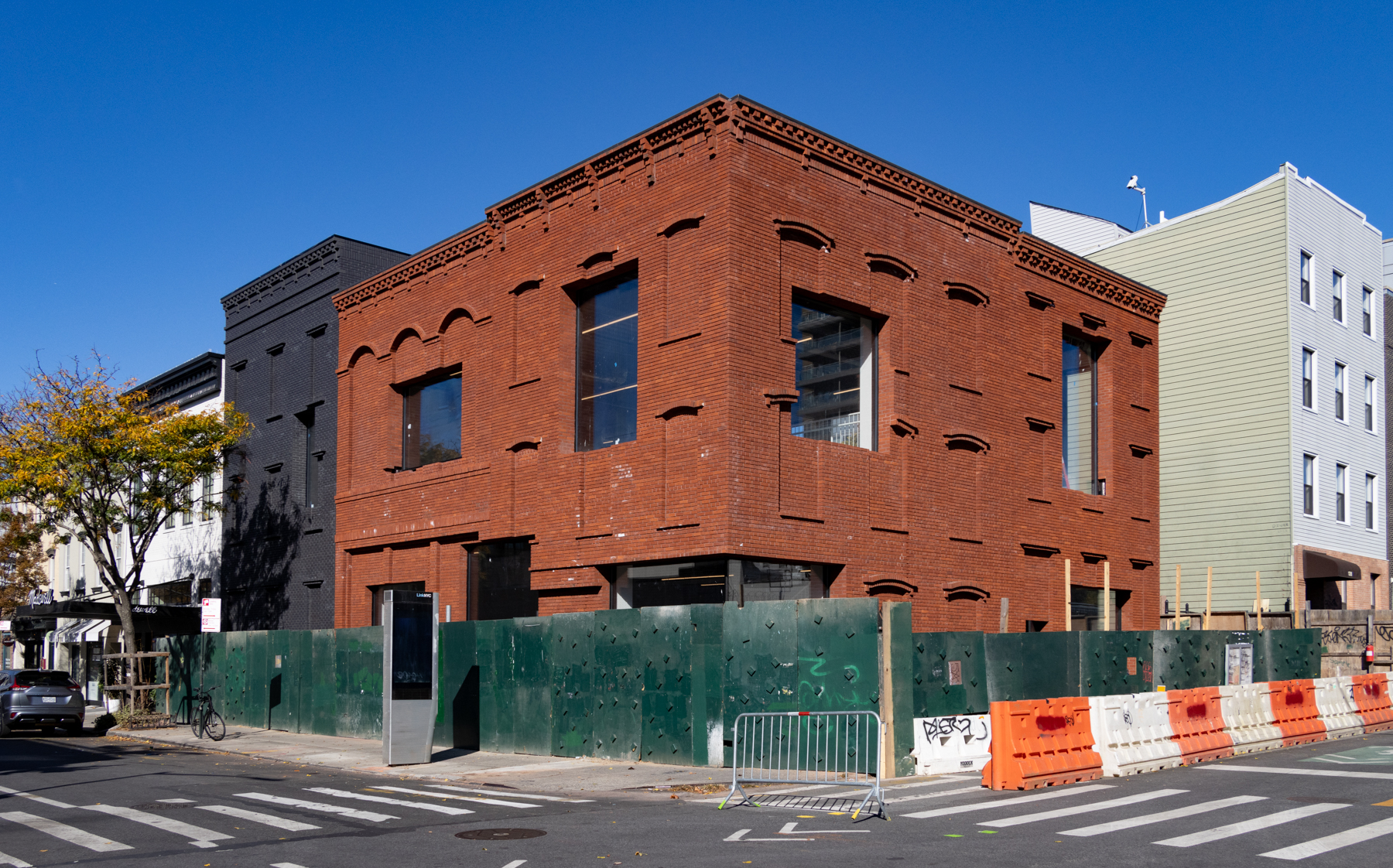




What's Your Take? Leave a Comment